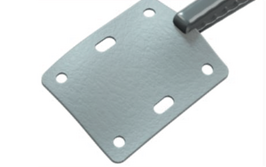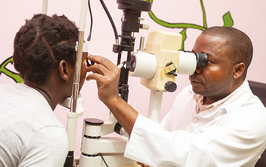Let’s Get Physical
New study proposes positive correlation between physical exercise and macular thickness in adults living with glaucoma
| 2 min read | Learning

Previous epidemiological studies have revealed that daily physical exercise can lead to lower rates of open-angle glaucoma, AMD, and diabetic retinopathy, as well as contribute to generally improved patient outcomes. However, up until now no large-scale studies had investigated the relationship between these two variables using the unique high-res capabilities of spectral-domain optical coherence tomography (SD-OCT), which “offers an objective and reproducible measurement of neuroretinal thickness” (1).
The new study cross-referenced data from the UK Biobank and the Australian PROGRESSA study cohort (2) to analyze the rates of macular thinning with adults living with glaucoma, and the potential neuroprotective benefits of physical exercise. To measure mean daily step count and exercise frequency, participants wore an accelerometer-based device (Fitbit Inspire 2 or Axivity AX3) on their dominant wrist for seven consecutive days. A second analysis of the cohort was adapted for age and gender, with a final multivariable regression analysis adjusting for traits with biological or known pre-existing associations with macular thickness.
The study concluded that moderate/vigorous activity was positively correlated with slower rates of macular ganglion cell-inner plexiform layer (GCIPL) thinning, stressing the potential neuroprotective benefits of exercise on the human retina, particularly in an ophthalmic disease-specific cohort, but also indicating that these findings could be concurrently applied to normative healthy individuals.
The authors acknowledged limitations with the study, namely that they were unable to assess various intensities of exercise (derived from a participant’s maximal oxygen uptake) due to the time-consuming nature of incorporating such exercise intensity data into the analysis of certain cohorts. But they suggest their findings might pave the way for further evaluation of the neuroprotective effects of long-term physical exercise using interventional study design models.
- EC Berry et al., “Physical Activity Is Associated With Macular Thickness: A Multi-Cohort Observational Study,” Invest Ophthalmol Vis Sci, 64, 11 (2023). PMID: 36867133.
- G. Puya et al., “Common variants near ABCA1, AFAP1 and GMDS confer risk of primary open-angle glaucoma,” Nat Genet, 46, 1120 (2014). PMID: 25173105.













